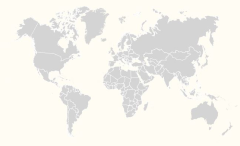Stanley Wasserman is an American statistician and Rudy Professor of Statistics, Psychology, and Sociology at Indiana University Bloomington, known for his work on social network analysis, mathematical sociology, network science and multidimensional network.
Education
Born in Louisville, Kentucky, Wasserman obtained his Bachelor of Science in economics from the University of Pennsylvania in 1973, and his Master of Arts in Business & Applied Economics in 1973. He then moved to Harvard University, where he obtained his Master of Arts in Statistics in 1974, and his Doctor of Philosophy in Statistics in 1977 with the thesis, entitled "Stochastic Models for Directed Graphs" under supervision of Frederick Mosteller.
Career
Wasserman started his career in 1974 at the National Bureau of Economics Research as Research Assistant and System Consultant in Statistics. After a year as Instructor at Harvard University, and as a Visiting Instructor at Carnegie-Mellon University, he started in 1977 as Assistant Professor at the University of Minnesota. In 1982 he moved to the University of Illinois at Urbana–Champaign, where he was appointed Associate Professor and in 1988 Professor of Psychology, Statistics, and Sociology.
Since 2004 he is the James H. Rudy Professor of Statistics, Psychology, and Sociology at Indiana University in Bloomington.
He was elected Fellow of the American Statistical Association in 1991, and Fellow of the American Association for the Advancement of Science in 1996.. the issue of how effectively to apply the latest developments in social network analysis to behavioural and social science disciplines.
Topics examined include: ways to specify the network contents to be studied. How to select the method for representing network structures.
How social network analysis has been used to study interorganizational relations via the resource dependence model.
How to use a contact matrix for studying the spread of disease in epidemiology. And how cohesion and structural equivalence network theories relate to studying social influence. The book also offers some statistical models for social support networks.



